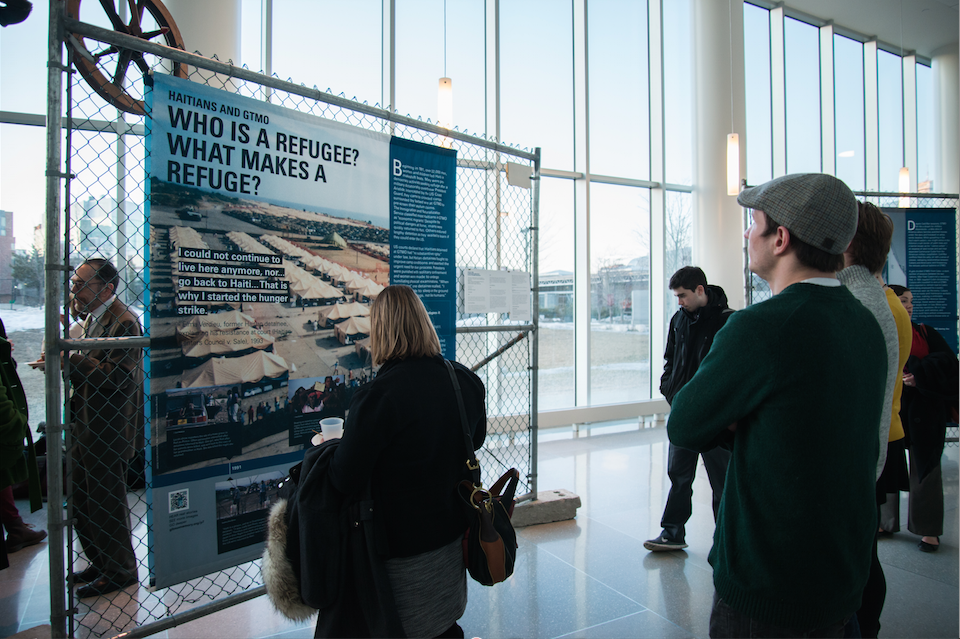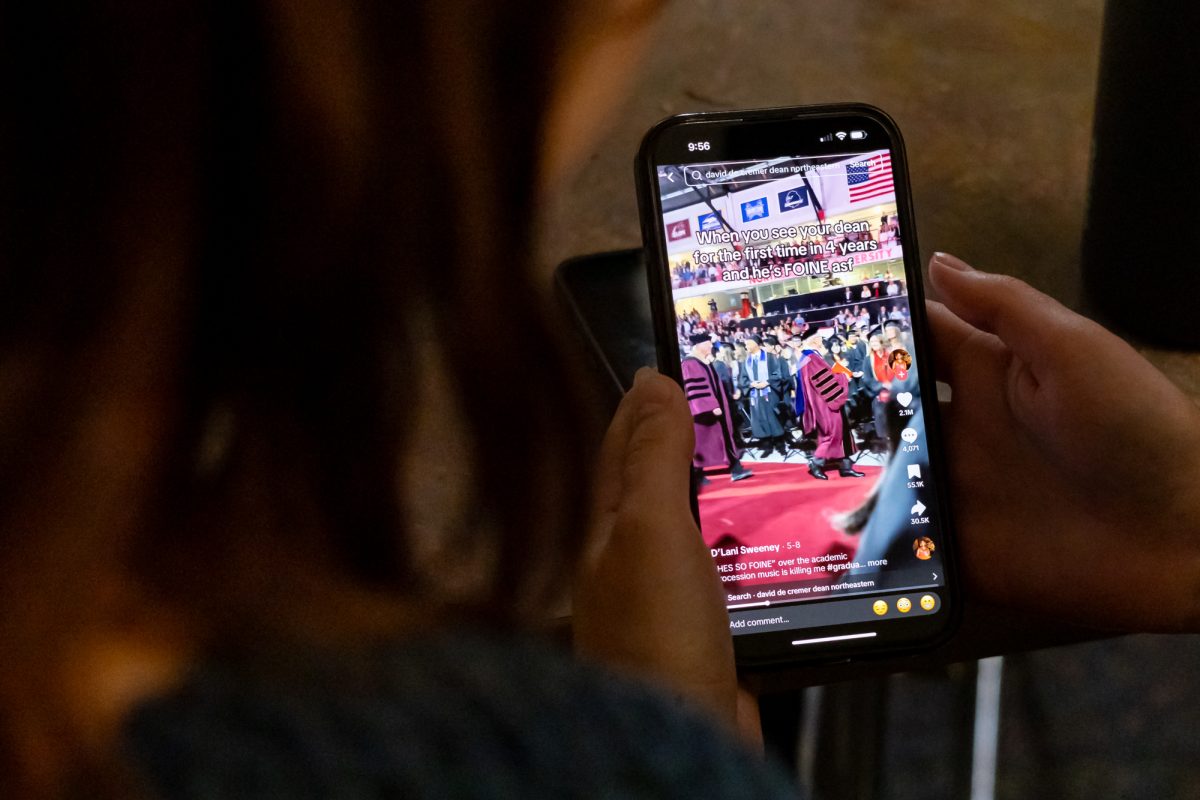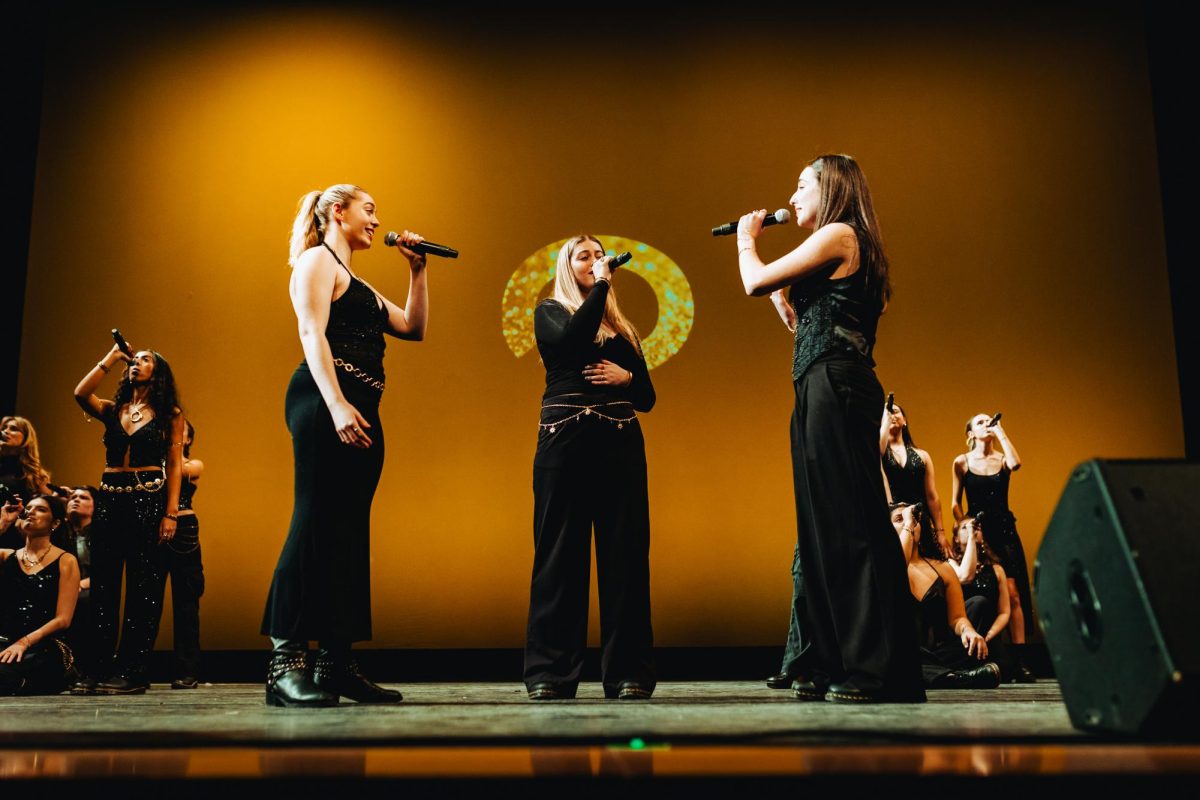By Eric Wissman
Confronting Guantánamo, which currently occupies the lobby of International Village (IV), is not a typical art exhibit. The display, featuring 13 canvases decorated with text and photographs, implores viewers to think critically about the history of the Guantanamo Bay USNaval Base (GTMO).
The exhibit opened on March 19, along with “In Our Name: a Play of the Torture Years,” which depicted the treatment of prisoners at the base’s detention camp, and a panel discussion on the ethics of torture in Blackman Auditorium.
The exhibit examines “the nature of place, the reality of the refugee experience, the ethics of publichealth, the implications of indefinite incarceration and the scope of human justice,” according to the project’s website.
Each canvas is supported by a chain link fence, intended to represent the barriers that, throughout GTMO’s history, have kept American soldiers, refugees and suspected enemy combatants of the War on Terror separated from the rest of Cuba.
The canvases were designed by students from different universities in collaboration with the Guantánamo Public Memory Project, an organization that seeks to raise public awareness of the naval base’s history and foster dialogue about its future.
Prior to arriving at Northeastern, the exhibit had been displayed at over a dozen universities around the world. The Northeastern University Public History Program and other organizations affiliated with Northeastern brought the exhibit to campus.
A group of 12 graduate students and faculty make up the project’s committee. They first came into contact with the Guantánamo Public Memory Project while studying the Haitian Refugee Crisis under Victoria Cain, assistant professor of history, who served as a faculty advisor to the committee.
The crisis was the result of over 30,000 Haitian refugees’ internment at Guantanamo after they attempted to flee to the US following the 1991 Haitian coup d’état.
Northeastern’s public history students included a notable addition to the project – the Creole translation of the exhibit’s text.
“Boston is the third largest Haitian-American community in the US, so we’re hoping that they get something out of the exhibit by seeing it in their own language,” Aisha De Avila-Shin, the exhibit operations coordinator and second year graduate student in the public history program, said.
Committee members also prepared a short documentary targeted toward Boston’s Haitian community to be displayed at the Haley House Bakery & Café in Roxbury on April 12 at 4 p.m. The event will include a discussion after the film is shown.
“It will pose questions about how you learned about this history,” Lindsay Day, project manager and second year graduate student, said. “How did it affect your understanding of Haitian history, American history and public health?”
While its organizers are especially interested in the Boston Haitian community, Confronting Guantánamo intends to open a dialogue that examines the entire history of the naval base.
The exhibit devotes an equal amount of space to each chapter of GTMO’s history. It details the American acquisition of the territory, the laws and policies that have affected the naval base, life as a refugee and the ethical issues surrounding the internment of suspected terrorists inside of the detention camp.
“This is about justice…was it just to detain all of the Haitian refugees for years? Is it just to indefinitely incarcerate men today? Who does Guantanamo belong to?” Sarah Hudson, publicity and marketing coordinator for the exhibit, said.
The final portion of the exhibit provokes the Northeastern community to consider whether Cuba or the United States should ultimately own the territory. It also gives attendees the opportunity to voice their opinion on the matter through a poll.
“I think eventually we should probably return it to Cuba; I thought it was interesting to see that there are people in the government who are opposed to it … yet they are never able to formally close it,” Michael Chen, freshman computer science and business major, said.
Dawn Wong, a freshman pharmacy student, thought otherwise regarding the American ownership of land in Cuba
“I don’t know if we should give it back to Cuba…it could actually be a very valuable resource to us,” Wong, said.
The project’s organizers said they seek to promote this kind of debate.
“Our top priority is raising awareness,” Day said. “Seeing both sides of the argument is really important … and I think this exhibit does a pretty even-handed job of showing the good, the bad, and the ugly.”
Additional programs include a roundtable discussion on medical ethics and public health at Guantanamo on April 2 and a dialogue about the Boston Haitian community on April 18. The exhibition is free and open to the public. It will remain in the IV lobby until April 25.
Photo by Scotty Schenck















